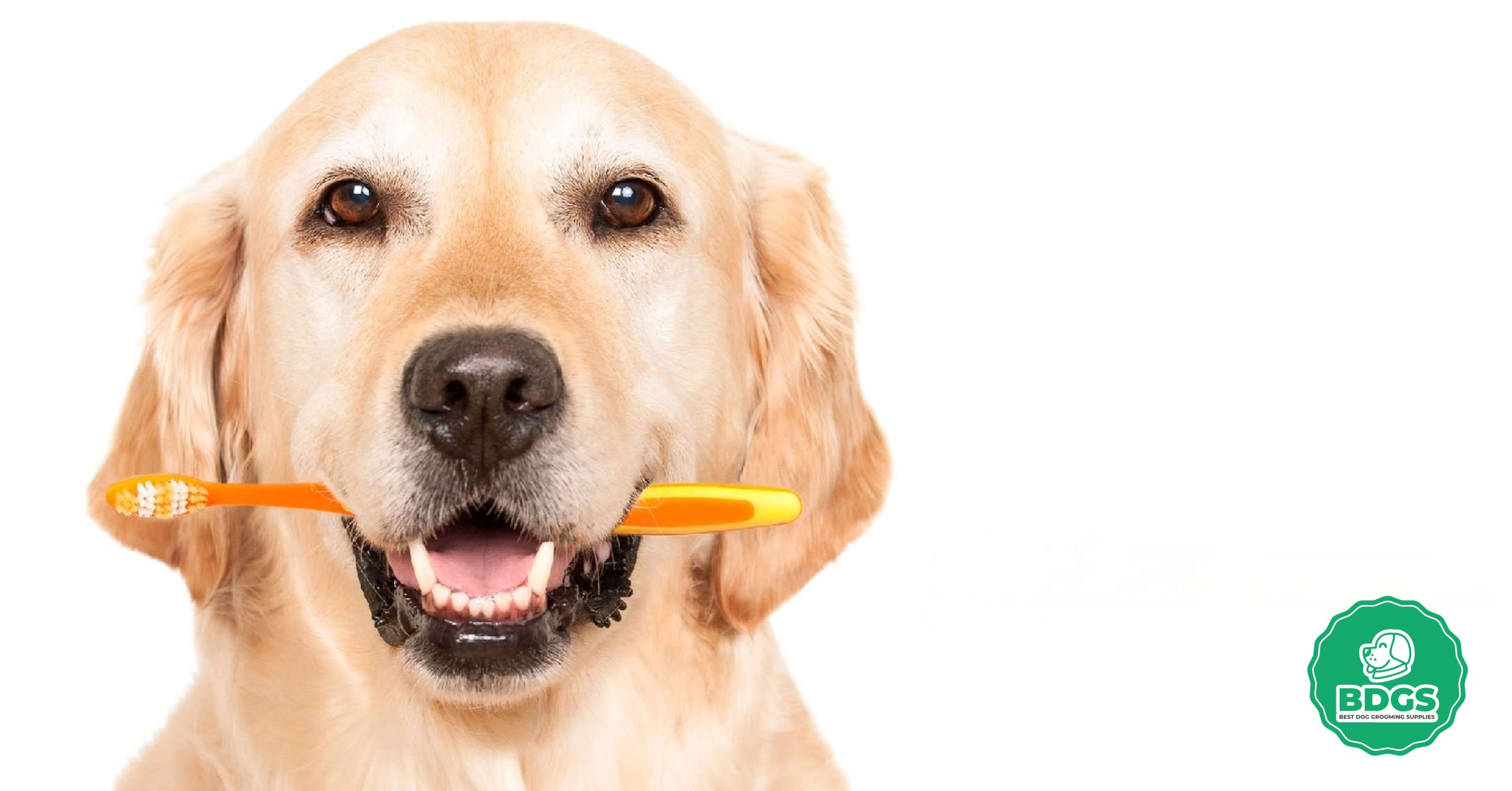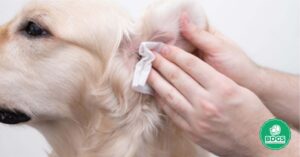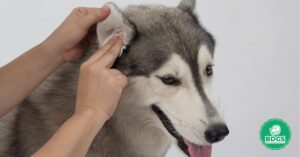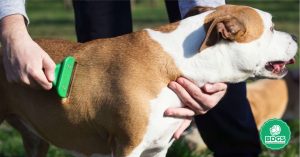Every pet owner wants the best for their furry friend, and keeping their pet’s teeth clean is integral. Just like people, our dogs need to take extra care of their teeth by brushing them daily. That’s when a “dog toothbrush” comes in handy.
The shape and needs of a dog’s mouth are considered when making a dog toothbrush. There are many choices to find the best dog toothbrush, a dog toothbrush and toothpaste kit, or even a handy dog finger toothbrush.
Some people even choose dog toothbrush toys or treats that make brushing fun for their furry friends. Don’t worry if your dog is small; some toothbrushes are made just for them.
Why wait, then? Let’s learn more about dog toothbrushes and help you choose the best one for your pet.
What is the size of the dog toothbrush?
A dog toothbrush comes in different sizes, depending on the dog’s breed and size. Every dog, from tiny Chihuahuas to big Great Danes, can find a size that works for them. There are three main sizes of dog toothbrushes:
- A small dog toothbrush is excellent for small dogs and puppies. The small size of these is meant to fit easily in the mouths of small dogs.
- A medium-sized toothbrush works best for dogs like Beagles and Cocker Spaniels about the same size. They are the right size to complete the job without being too big or too small.
- Large toothbrushes: These are designed for big dogs such as Golden Retrievers and Labradors. They have longer handles and more oversized bristles to clean big teeth effectively.
What is the Bristle type of dog toothbrush?
A bristle toothbrush is made to clean a dog’s teeth and gums in a certain way. It’s easy to understand:
- Soft bristles: The bristles on most dog toothbrushes are soft. They don’t hurt or hurt the dog’s gums and clean the teeth well without any pain or soreness. It’s great for dogs whose gums are sensitive or have never been brushed.
- Medium bristles: Some dog toothbrushes have soft bristles. They’re not as smooth as soft brushes but are still clean and gentle. These work well for dogs with more tartar growth or chew very hard.
- Rubber bristles are ordinary in dog toothbrush toys and other brushes. These aren’t brushes like most; they’re rubber nubs. They can work well, especially if the dog chews on them. It can help rub the gums and clean the teeth.
What are the handles of a dog toothbrush?
Dog toothbrush handles are made to make it easy for pet owners to clean their dogs’ teeth properly. To help you understand the different kinds, here’s a short list:
- Long handles: Most of the time, they have long handles. When dog owners use toothbrushes with long handles, they can easily clean their dogs’ back teeth. They’re handy for bigger dogs whose mouths are fuller.
- Angled handles: The handles of some dog toothbrushes are hacked. This shape helps you reach places that are hard to reach, which makes brushing more effective. You can clean and hold things better at an angle.
- Double-ended handles: These toothbrushes have bristles on both ends, with more oversized bristles on one end for the back teeth and smaller bristles on the other for the front teeth. It’s suitable for dogs of different sizes or people who want a tool that can do many different things, like having two brushes in one.
- Finger brushes: Finger brushes have these handles, which aren’t typical but are still worth noting. A dog finger toothbrush fits over the tip of the owner’s finger, which gives them better control when brushing. They’re great for puppies, small dogs, and any dog that needs to start brushing.
How many types of dog toothbrush?
A dog toothbrush comes in several different styles to meet the dog’s and its owner’s needs. To put it simply, these are the main types:
- Standard Toothbrush: This is like a toothbrush for people, but it’s made for dogs. Usually, it has a long handle and soft brushes that are good for a dog’s mouth.
- Finger Toothbrush: This kind fits over the tip of the user’s finger. It’s better for babies or dogs that have never been brushed before because it’s smaller and more accessible to hold.
- Toy Toothbrush: A dog toothbrush toy is not a natural toothbrush. Instead, it is a chew toy meant to help clean a dog’s teeth while playing.
- Dog Toothbrush Treats: These aren’t your average brushes; they’re treats your dog can eat that are meant to clean its teeth and stop tartar buildup while it chews.
- Dog Toothbrush Kit: This usually comes with a toothbrush and toothpaste made just for dogs. Some kits may even come with more than one brush or a mix of standard and finger brushes.
What is the taste of a dog toothbrush?
The dog toothbrush doesn’t taste like anything. Different tastes can be found in the toothpaste that is used with it. But to put it simply:
A dog toothbrush is something to clean; it doesn’t taste good. However, toothpaste made just for dogs is often used with it. This toothpaste can taste like chicken, beef, peanut butter, or mint to make brushing fun for the dog.
When you brush your dog’s teeth, they will taste the toothpaste, not the brush!
What is the purpose of a dog toothbrush?
A dog toothbrush is meant to help keep a dog’s teeth clean and healthy. Dogs can get food stuck between their teeth just like people can.
Brushing your teeth removes these things, stops tartar from building up, and lowers your risk of gum disease.
A dog’s breath stays fresher if it is brushed often. In short, a dog toothbrush keeps our animal friends’ teeth clean.
What is the budget for a dog toothbrush?
A dog toothbrush is essential for keeping your dog’s teeth clean.
- Basic Dog Toothbrushes: These cost around $3 to $6. They’re simple, but they do the job, and the shape is usually made to fit a dog’s teeth. Some brushes have two ends, one with a big brush and one with a smaller one, so they can check teeth of different sizes.
- Finger Toothbrushes: A pack of finger toothbrushes costs between $4 and $10. They have soft plastic or rubber caps that fit over your hand. They give you more control while brushing, which is excellent for dogs that might be scared of a regular brush.
- Advanced or Branded Toothbrushes: Toothbrushes with extra features or brand names usually cost between $10 and $15. They could be made in a way that is good for your body, have special brushes, or come with toothpaste in a dental care kit.
- Electric Dog Toothbrushes: There are electric toothbrushes made just for dogs. However, they can be pricey (often over $15). They clean well, but your dog might need time to get used to them.
When budgeting for a dog toothbrush, keep in mind:
- Dog’s Size and Breed: Make sure the brush fits the size of your dog’s mouth. You will need a bigger brush for big dogs than for small dogs or puppies.
- Replace Regularly: Like our toothbrushes, a dog’s toothbrush should be changed every three to four months or when the bristles wear down.
- Choose Quality Over Price: It may be tempting to buy the cheapest choice, but a slightly more expensive but better-quality toothbrush may work better and be more comfortable for your dog.
What are the drawbacks of a dog toothbrush?
Getting Used To: At first, some dogs might not like having a toothbrush in their mouth. They might need some time to get used to it.
- How long they last: Some brushes break down quickly, especially if your dog chews on them.
- Concerns about Size: If you pick the right size, it might clean well or be too small for your dog.
- Manual Work: Standard toothbrushes must be brushed by hand, which takes time and effort from the owner. It is different from dog toothbrush toys or treats.
- Missed Spots: If it’s not used correctly, some parts of the dog’s mouth could be cut, making the cleaning uneven.
Buyer Guides: How to Buy a Dog Toothbrush
A dog toothbrush will help keep your pet’s teeth clean and healthy. It’s easy to choose the right one with this simple guide:
- Size Matters: It’s essential to look at your dog’s size. Any dog needs a toothbrush made just for them, no matter how big or small. The toothbrush should be easy for them to hold in their mouth.
- Type of brushes: Soft brushes are gentle and suitable for most dogs, especially those with sensitive gums or new to cleaning. You might want to get a brush with medium bristles if your dog has a lot of tartar or chews.
- Design of the Handle: Long arms make it easier to reach the back teeth, especially on bigger dogs. Handles with an angle or two ends can be used with various teeth. A dog finger brushing might give you more power.
- Taste: Remember that the toothbrush doesn’t taste good. But if you buy toothpaste for your dog, choose a taste they will enjoy, like chicken or peanut butter.
- Toys and Treats: If you don’t think a regular brush will work for your dog, you could try dog toothbrush toys or treats. They can help clean your dog’s teeth while playing or chewing.
- Read Reviews: Check out what other pet owners say about the product before buying it. Review reviews give you an idea of how long the brush will last and how well it works.
- Safety First: Make sure the toothbrush is made of materials safe for dogs and has no parts that are easy to break off and could choke the dog.
- Set a budget: Different brushes cost different amounts of money. Plan your spending, but remember that buying a good toothbrush now will save you money in the long run.
Conclusion
Taking care of your dog’s teeth is as important as ensuring they eat right and get enough exercise. A dog toothbrush is essential to keep your pet’s teeth healthy.
Even though the toothbrush doesn’t taste good, using flavored toothpaste with it can make brushing fun for your dog. Remember to consider the size, bristle type, and handle design when buying one.
Some dogs might like toys or treats that look like toothbrushes because they make cleaning fun and easy. To ensure you’re getting a good product, you should also look at reviews and make sure it’s safe.
Getting the right toothbrush for your pet not only keeps their breath fresh and their teeth shiny, but it also helps their health in general.
Everyone who owns a dog wants their dog to be happy and smile a lot. So, put oral health first and make brushing a regular habit.
Frequently Asked Questions
The best toothbrush for dogs is made just for them, with soft brushes and the right size for their mouth. The dog’s size, how well it handles being brushed, and the owner’s choice all play a part. Dog finger toothbrushes are more accessible to control. In contrast, double-ended toothbrushes with different-sized hair heads can be used on various tooth sizes.
It would help if you brushed your dog’s teeth, and that’s fine. Brushing your teeth regularly can help stop tartar growth, gum disease, and bad breath. Besides that, it helps keep your dog’s mouth healthy, which can be good for his overall health.
Of course! It would help if you bought your dog a toothbrush. If you clean your dog’s teeth regularly, they won’t get painful dental problems that cost a lot to fix. Brushing your dog’s teeth regularly can help you avoid future vet bills and keep his mouth healthy so he has better breath.
Yes, you can use a baby toothbrush on your dog. It is especially true if you have a small dog or a puppy. Baby toothbrushes are suitable for dogs because they have gentle, soft bristles on the gums. But make sure the toothbrush head is the right size for your dog’s mouth and that you use toothpaste made just for dogs.
Get Ready: First, get the right tools, like toothpaste and a toothbrush made just for dogs.
Pick the Right Time: Pick a calm time for your dog, like after a walk or the kids have played.
Slowly: First, let your dog taste the toothpaste to get used to how it tastes.
Positioning: Put your dog in a relaxed spot where you can get to their mouth quickly.
Attention: When you brush your dog, gently lift its lip. Brush the dog’s teeth in a circle with the toothbrush and a little dog toothpaste. Pay attention to the gum line, and remember to brush your teeth inside and outside.
Time: Touch each side of your dog’s mouth for 30 seconds.
Reward and Praise: Give your dog a treat or lots of praise after you brush him. It makes the experience enjoyable and makes them want to brush their teeth again.
Toothbrush: Use a toothbrush made just for dogs that fit their mouth. You can get a regular toothbrush, a double-ended toothbrush, or a finger toothbrush.
Toothpaste: It’s essential only to use toothpaste made for dogs, as human toothpaste may contain harmful ingredients. To make dental care more enjoyable for dogs, flavors like chicken, beef, and peanut butter are available.
Other Options: If a regular brush doesn’t work, you could try dental chews, brushing toys, or dental sprays that clean teeth and freshen breath.




